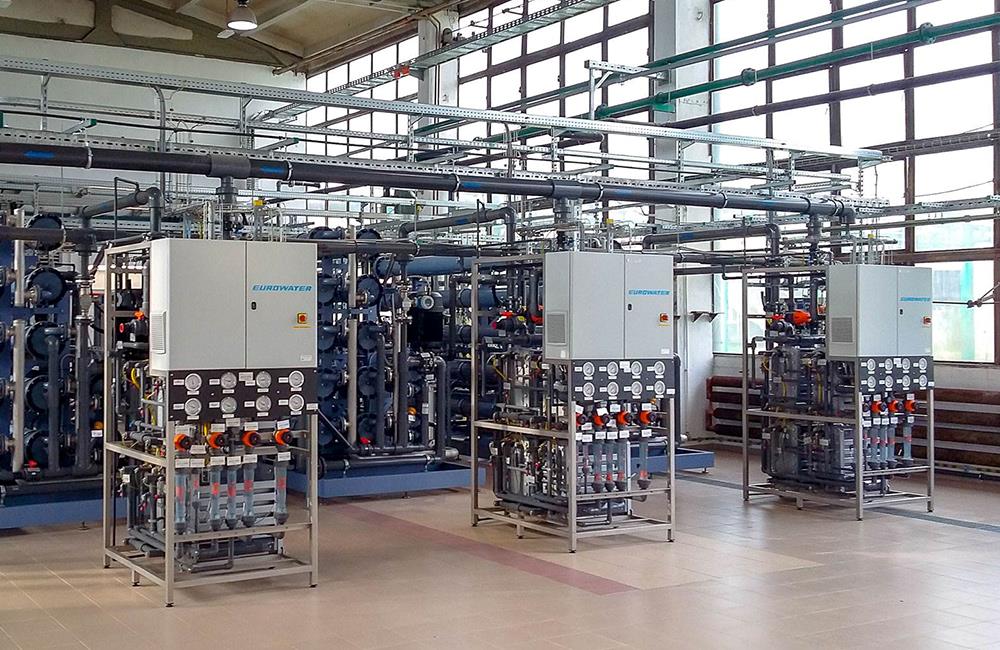
Electrodeionization for ultrapure water
Electrodeionization (EDI) is used after reverse osmosis for polishing of demineralized water to obtain low levels of conductivity and silica. The EDI uses ion exchange membranes, ion exchange resins and electricity to produce high-quality water with no regeneration downtime. EDI is an alternative to a conventional mixed bed polisher.
Typical applications for EDI are boiler feedwater at heat and power plants, process water within the electronic industry, the pharmaceutical industry, hospitals and laboratories.
EDI advantages
Typical applications of EDI
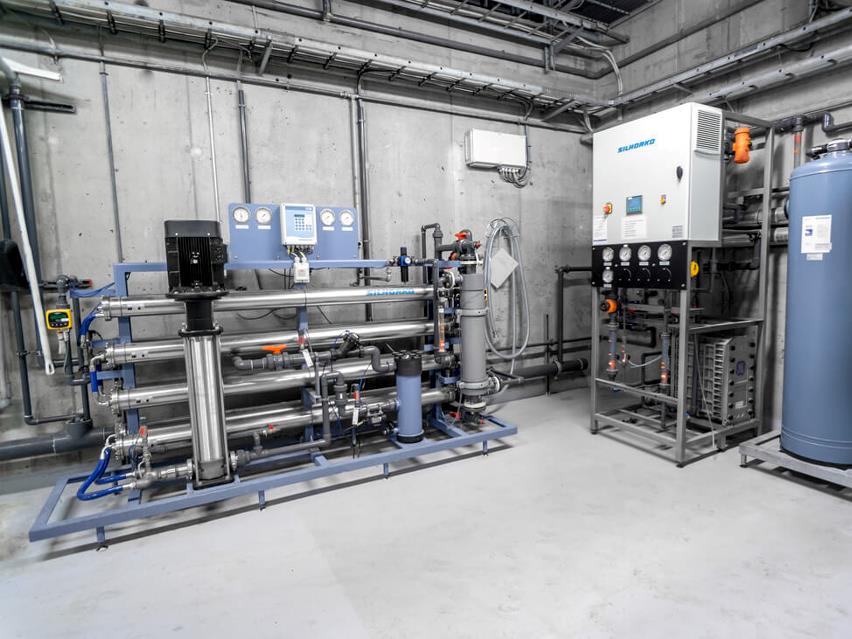
Water for power plant
Instead of using a conventional mixed bed, a membrane degasser in combination with EDI can produce high-quality demineralized water without using any chemicals. This provides corrosion-free boiler feedwater with low conductivity and silica content.
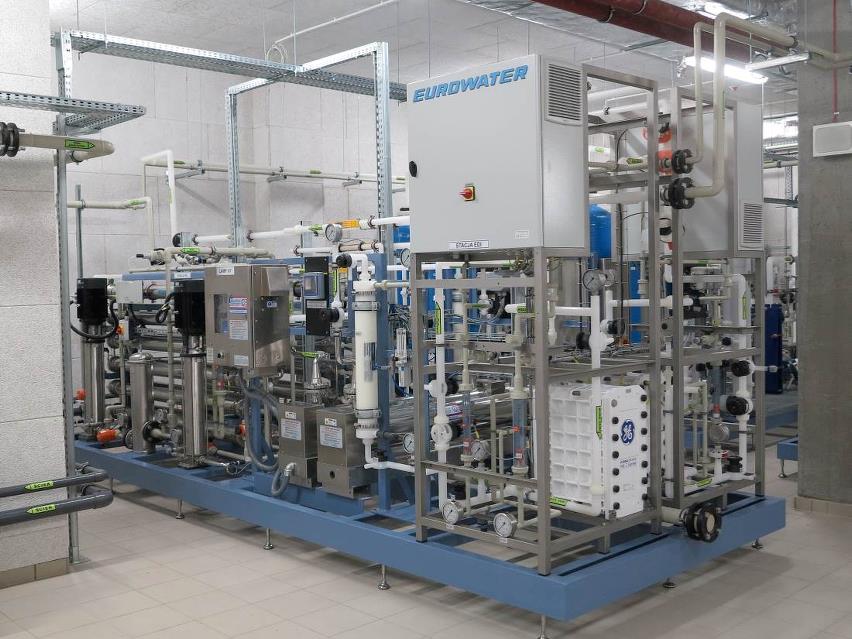
Ultrapure process water
EDI after reverse osmosis supplies ultrapure process water with low conductivity. The photo shows EDI for ultrapure water at a microelectronic company. The EDI is customized with special pharma modules for a hygienic design.
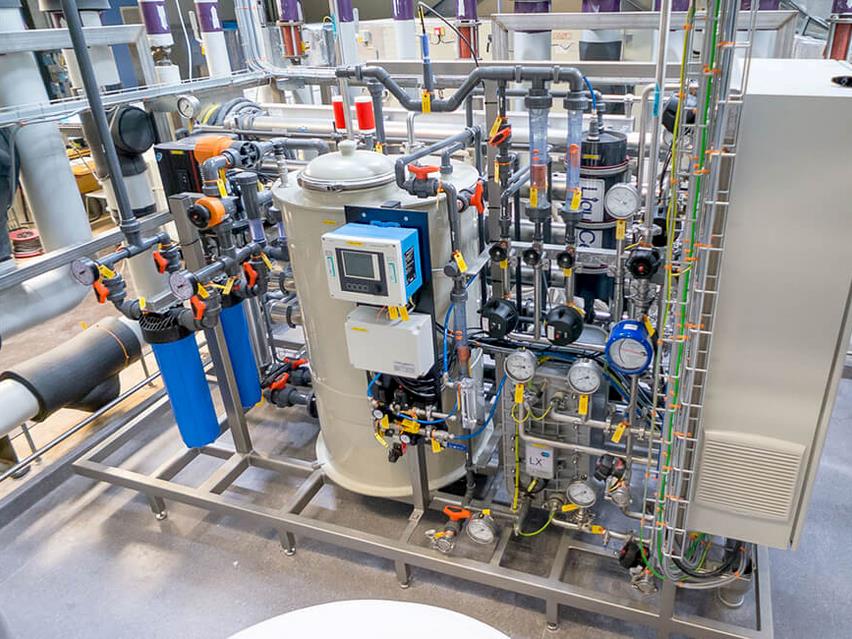
Water for pharma
Purified water production within pharma industries requires a water treatment system in a hygienic design. The EDI is customized to meet the current versions of European and United States Pharmacopoeia (USP, Ph. Eur.).
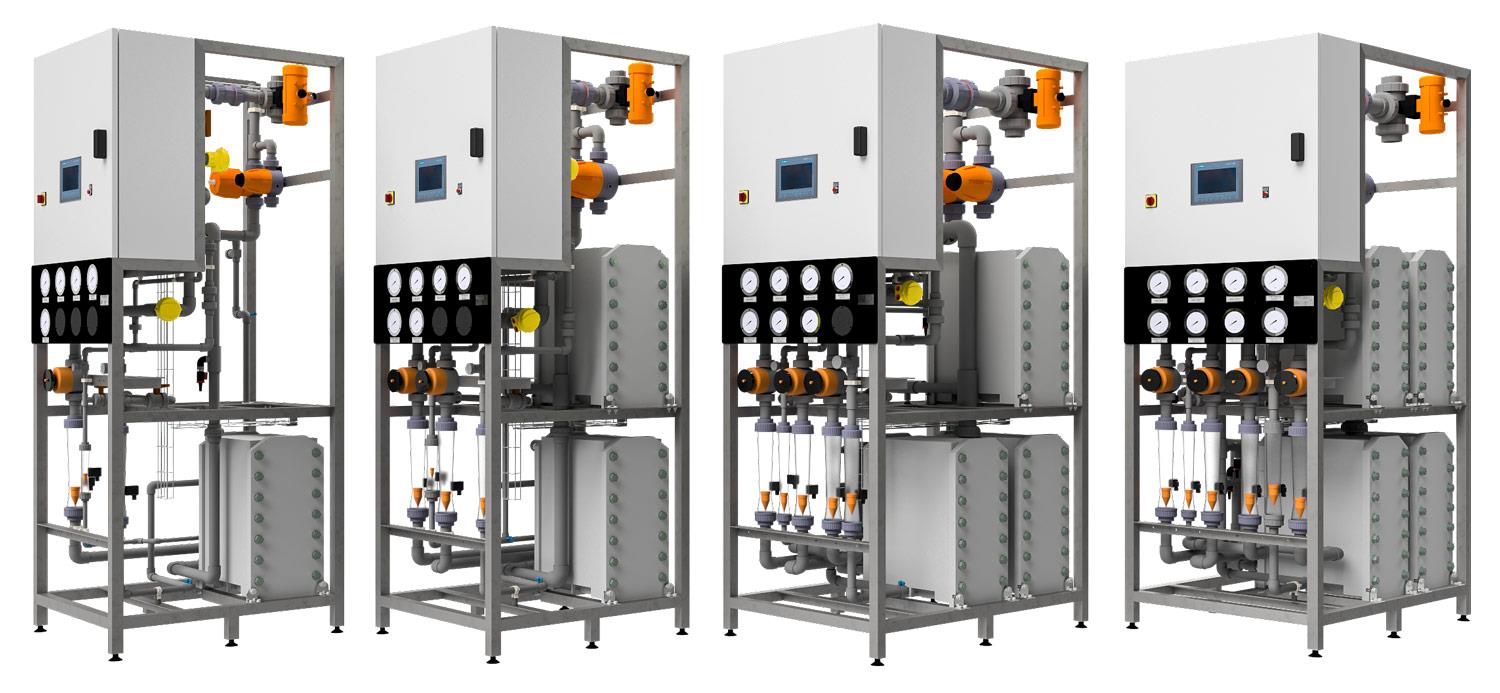
Small, medium, large ...
We use a modular design principle throughout all our EDI series.
The photo shows one of our EDI series with flow rates from 1.7 to 18 m³/h.
Basic features, high reliability
Our EDI product programme comprises 14 standard modules with flow rates up to 60 m3/h. Each series is designed with high-quality components for maximum reliability and easy maintenance.
Based on the standard design, we also offer extended features for more automation and safety. Please contact us for more information on the extended features.
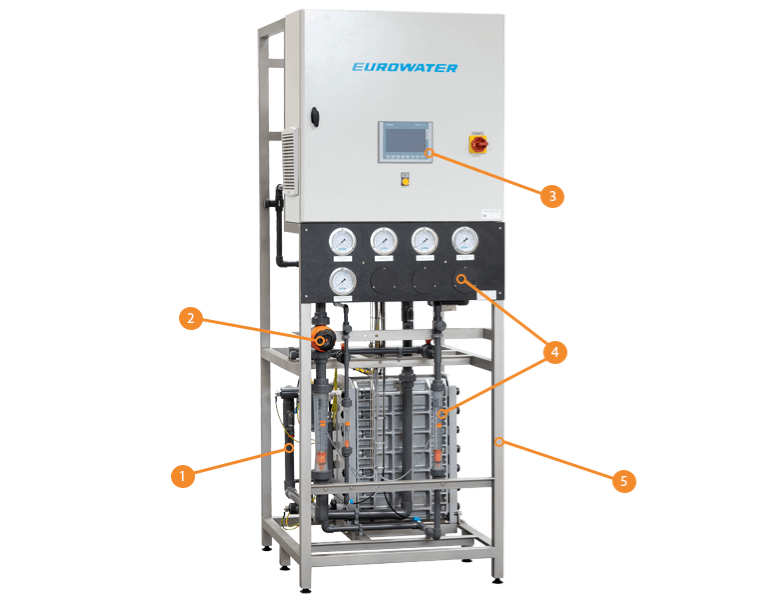
1. Pipe system
PVC pipe system including manual 3-way outlet valve for quality rinse or circulation.
2. Conductivity transmitter
Signet conductivity transmitter. For reliable water quality.
3. PLC control
Available with or without PLC control.
4. Easy overview
Pressure gauges and flowmeters ensure easy supervision of the operation.
5. Frame
Frame of stainless steel AISI 304 for a robust construction.
Option
Control your water treatment system
By choosing an EDI unit with a PLC control, you can monitor your complete water treatment system and not only the EDI unit.
The PLC is installed in a control cabinet with a touch screen operator interface. Various alarms can be set for high conductivity, low product flow, concentrate flow, and electrode flow. The software is programmed by EUROWATER automation engineers, which gives you flexible software designed to your operation.
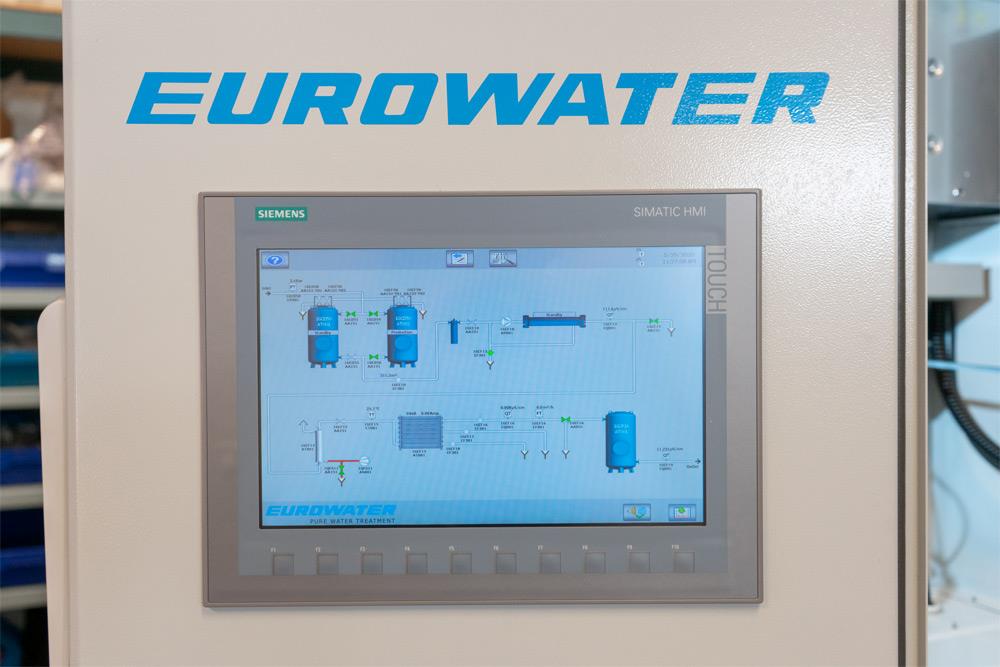
More options
The EDI unit is engineered according to the same design principles as our standard plants, but customized to fit your specific needs. Almost all parameters and components can be varied and combined.
See a selection of customized options below.
Higher flow
With a customized EDI, it is possible achieve a flow rate up to 60 m3/h.
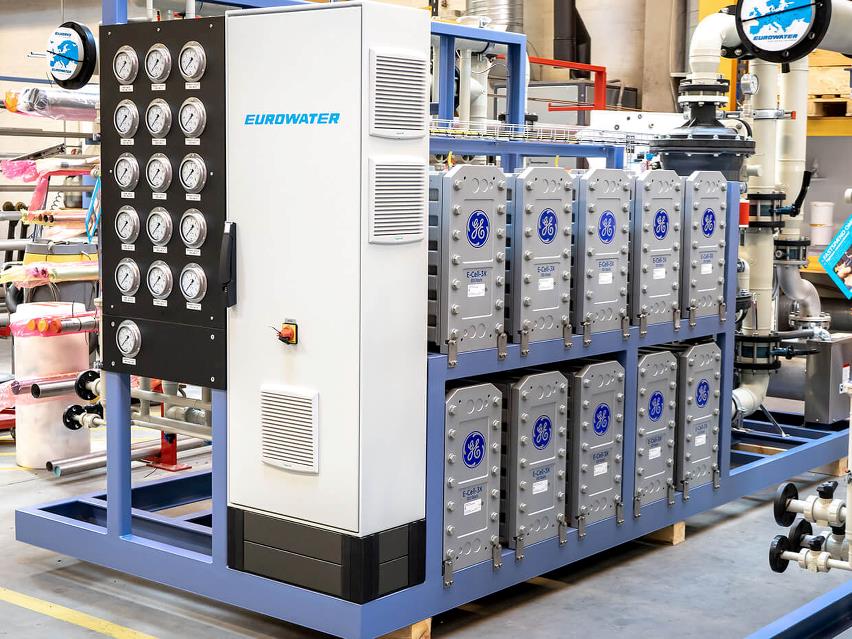
PP pipe system
EDI with PP pipe system is corrosion- and temperature resistant. The pipes are IR-welded for high-impact strength and is thermal forming resistance.
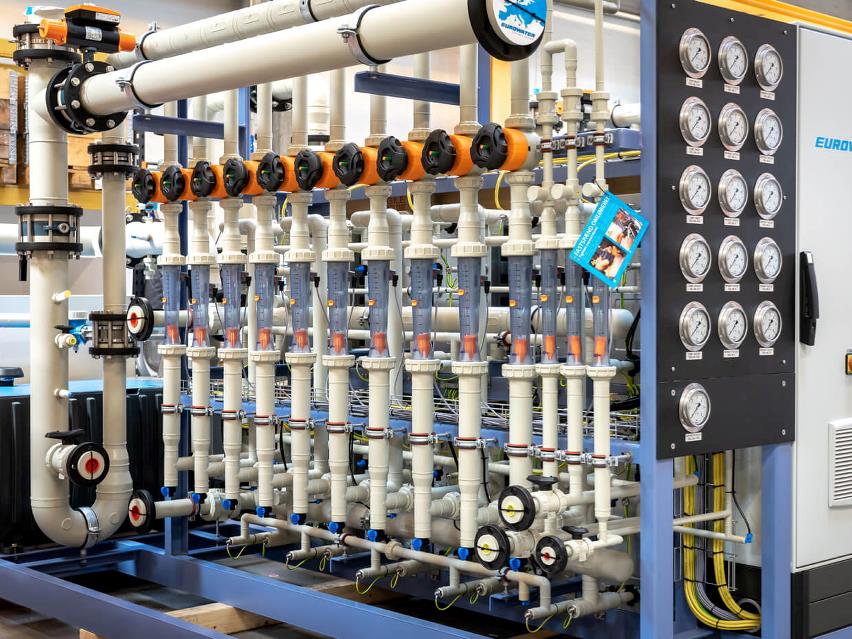
Instrumentation
The EDI units can be supplied with special control and measurement equipment.
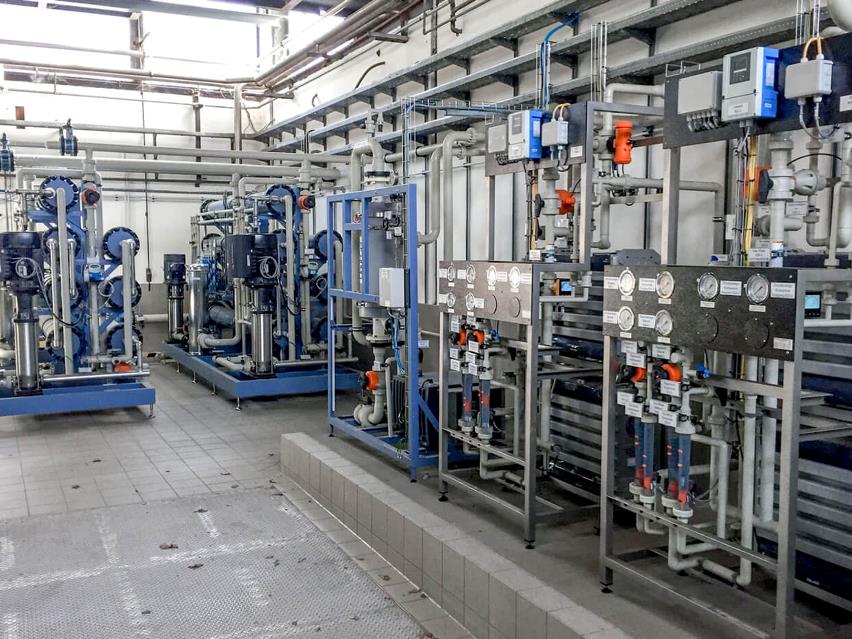
Description of the EDI process
A typical EDI device contains alternating semipermeable anion and cation ion-exchange membranes. The spaces between the membranes are configured to create liquid flow compartments with inlets and outlets. A transverse DC electrical field is applied by an external power source using electrodes at the ends of the membranes and compartments.
Trapped ions
When the compartments are subjected to an electric field, ions in the liquid are attracted to their respective counter electrodes. The result is that the compartments bounded by the anion membrane facing the anode and the cation membrane facing the cathode become depleted of ions and are thus called diluting compartments.
The compartments bounded by the anion membrane facing the cathode and cation membrane facing the anode will then "trap" ions that have transferred in from the diluting compartments. Since the concentration of ions in these compartments increases relative to the feed, they are called concentrating compartments, and the water flowing through them is referred to as the concentrate stream (or sometimes, the reject stream).
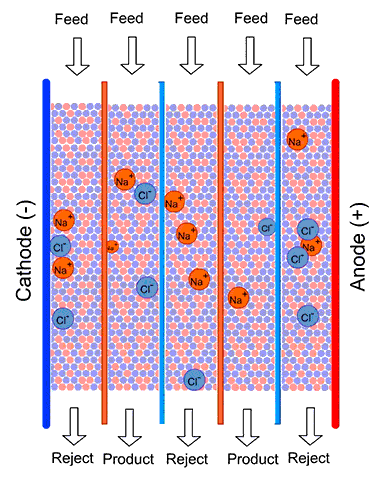
Ion exchange membranes
Now let's add some ion exchange membranes to direct the ions into different flow channels as shown in the animation. The red membranes are cation-selective membranes and the blue membranes are anion-selective membranes.
The negatively-charged anions (e.g., Cl-) are attracted to the anode (+) and repelled by the cathode (-). The anions pass through the anion-selective membrane and into the adjacent concentrate stream where they are blocked by the cation-selective membrane on the far side of the chamber, and are thus trapped and carried away by the carrier water in the concentrate stream.
The positively-charged cations (e.g., Na+) in the purifying stream are attracted to the cathode (-) and repelled by the anode (+). The cations pass through the cation-selective membrane and into the adjacent concentrate stream where they are blocked by the anion-selective membrane and are carried away.
In the concentrate stream, electrical neutrality is maintained. Transported ions from the two directions neutralize one another's charge. The current draw from the power supply is proportional to the number of ions moved. Both the "split" water (H+ and OH-) and the intended ions are transported and add to the current demand.
Optimize the EDI capacity
Removal of CO2 after reverse osmosis and before EDI can improve the performance of the EDI significantly and keep the silica content low. CO2 can be removed with a membrane degasser.
See more about membrane degasser
Pretreatment on one frame
A complete water treatment plant mounted on a frame, factory-built with all internal piping and wiring. This solution can be customized to fit your need for pretreatment and EDI.
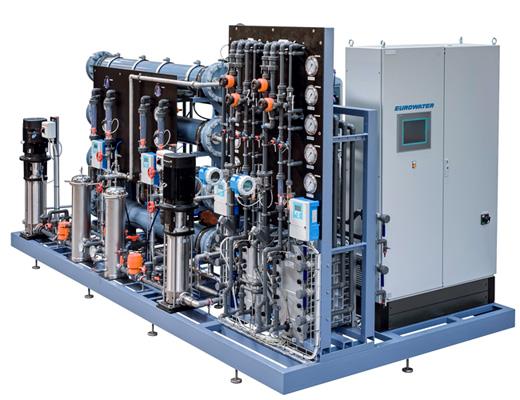
See references with EDI plants
Get the optimum solution
Selection of unit depends on application, water quality, and water consumption. We are at your service to ensure the optimum solution based on our combined know-how. Fill in the form and let us get back to you.
